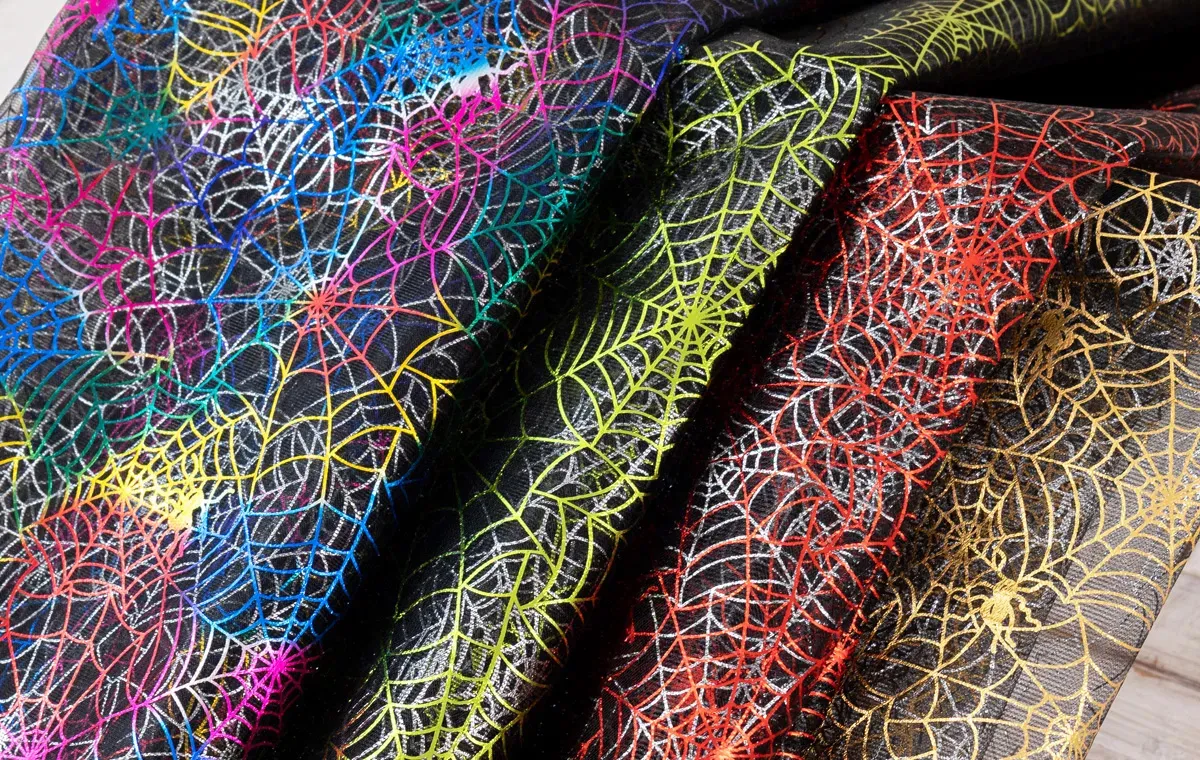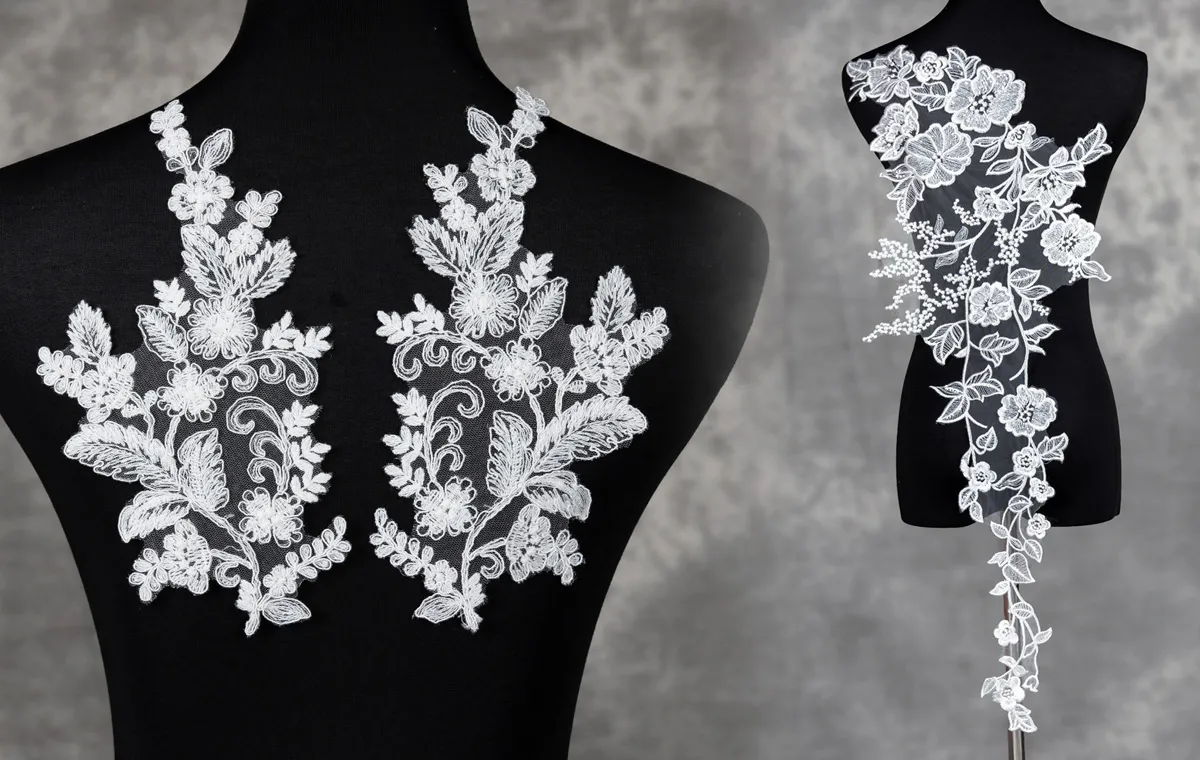What Is Velvet Fabric?
Velvet is a medium-weight, soft fabric made of different types of fibers. The fibers are woven together in a specific pattern and then brushed to create a raised, velvety texture. This texture makes velvet fabric soft to the touch and gives it an elegant, luxurious look. The orientation of the pile threads changes the way the fabric reflects light, which is why you perceive the color of a velvet lighter or darker from different angles.
Velvet fabric is popular for evening wear and dresses for special occasions, as the fabric was initially made from silk. Cotton, linen, wool, mohair, and synthetic fibers can also be used to make velvet, making velvet less expensive and incorporated into daily-wear clothes.
Different Types of Velvet Fabric
Depending on the manufacturing process and the materials used, there are a variety of different types of velvet fabric available -- let’s explore this beautiful material.
Stretch Velvet



Stretch Velvet is a type of stretch fabric that is typically composed of a blend of nylon, spandex, or polyester. This fabric has a slight shimmer to it, which gives it a luxurious look, and it is usually knitted or woven for a soft, stretchy feel. It is a versatile fabric that is often used for dresses, skirts, tops, dancewear, and other apparel.



Sequinned Velvet



Sequinned velvet is a type of fabric that is made from a combination of velvet and sequins. It is often used to make clothing, costumes, and accessories. It has a glossy, shimmery appearance and is quite eye-catching. This fabric is often used for creating evening wear, dresses, and other glamorous items. It is also popularly used for making costumes for theater and dance performances.



Cotton Velvet
Cotton velvet is a soft textile with a deep, plush nap, but a little thicker, firmer, and heavier than other velvets, with a more stable woven base, and therefore somewhat easier to work with. More dense than cotton velveteen, with better drape. Can be used for formal wear, but because of its slightly heavier weight, better for more structured, rather than draped designs. Wonderful for jackets, suits, and outerwear. Stretch cotton velvet (usually called “velour”) has a limper drape and is best suited for casual wear or leisure items such as bathrobes, tops, etc. These types of velour fabrics are sometimes sold in a Polyester Velvet
Polyester velvet
Polyester velvet is generally the least expensive. Midway between cotton velvet and silk or rayon velvet in weight. Resistant to wrinkling and less prone to the easy crushing of the pile, but less luxurious, slightly stiffer, and less elegantly draping than silk or rayon velvet. Quite heat-sensitive. Sometimes sold with Lycra content and/or in knitted form, to provide stretch. The stretch types are often used for modern evening gowns, wraps, fancy tops, etc.
Crushed Velvet
Crushed velvet is a type of velvet fabric that has been "crushed" in order to give it a unique, slightly textured appearance. The fabric is usually made from rayon or polyester and is often dyed or printed in a variety of colors and textures. Crushed velvet has a unique, crinkled texture and is often seen in clothing, upholstery, and curtains. It is very soft and has a luxurious look and feel.
Know the Difference Between Velvet, Velour, and Velveteen
Velvet, velour, and velveteen are three distinct fabrics that are often confused due to their similar appearances. All three are part of the velvet family, which is known for its soft, luxurious feel and distinctive sheen. Each fabric is made from different materials and has a different purpose, so it is important to understand the differences between them.
Velvet is a smooth, densely woven fabric that is usually made from silk or synthetic fibers such as rayon, acetate, or polyester. It is known for its luxurious shine and soft feel and is often used to make clothing, upholstery, curtains, and other decorative items. Velvet is often more expensive than other fabrics and requires special care to maintain its luster.
Velour is a knit fabric made from cotton or synthetic fibers such as polyester. It is known for its soft, plush feel, and is often used to make clothing, upholstery, curtains, and other decorative items. Velour is usually less expensive than velvet, and it requires only minimal care to maintain its softness.
Velveteen is a woven fabric made from cotton or synthetic fibers such as polyester. It is known for its soft, plush feel and distinctive sheen, and is often used to make clothing, upholstery, curtains, and other decorative items. Velveteen is usually more affordable than velvet and velour, and it is easy to care for.
No matter which fabric you choose, velvet, velour, or velveteen, it is sure to add a touch of glamour and luxury to your home or wardrobe.
How to Care for Velvet?
Velvet is the perfect fabric to make a bold fashion statement—but it also requires special care. Taking the right steps to care for velvet fabric is essential to ensure its longevity. If you’re not sure how to properly care for a velvet garment or piece of furniture, here’s all you need to know:
- Don't apply pressure to it when wet.
- Hang in a well-ventilated area after wearing.
- Don't blot spills, shake excess moisture, and then air dry.
- Never iron.
- Use steam to remove wrinkles.
- Clean garments promptly after wearing.

 Best
Best  New
New  Featured
Featured  Featured
Featured 









